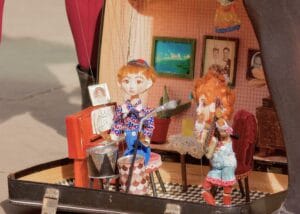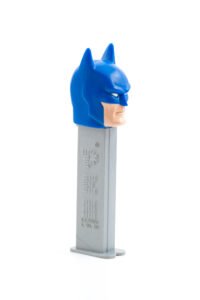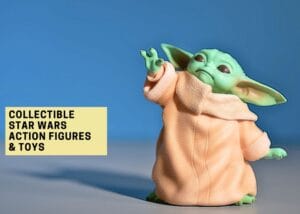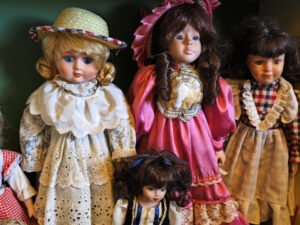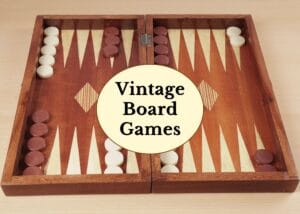If you’re into antiques, you’ve probably heard about some old vase from 50 years ago selling for $2,000 or vintage jewelry from 100 years ago fetching $5,000 at auction. But what most people don’t know is that these century-old playthings are worth just as much.
Not only were these toys durable, lasting for over a century, but they also showcased better engineering and artistry from back in the day. That’s why, today’s collectors treat them like more than just toys; treasures!
So, get ready for a nostalgic journey as I’m going to show you 15 over 100 years old antique toys you’d wish you still had, and honestly, you actually might!
| Toy Name | What’s It Worth? |
| Antique Cast Iron Mechanical Banks | $150-$800; rare: $1,000-$3,000+ |
| Hand-Signed Steiff Teddy Bear | $200-$1,200; rare: $3,000-$5,000+ |
| Tinplate Mechanical Toys | $100-$600; rare Lehmann: $1,200-$4,000+ |
| French Porcelain Fashion Dolls | $400-$2,000; top makers: $5,000-$15,000+ |
| Märklin Tinplate Train Sets | $150-$800; complete sets: $2,000+ |
| Circus Toys & Characters | $75-$800 per figure; sets: $1,000-$2,500+ |
| Wooden Building Blocks | $100-$400; rare sets: $400-$800+ |
| Topsy Turvy Cloth Dolls | $150-$500; 19th-century: $600-$1,000+ |
| Clockwork Toys | $400-$1,500; French sets: $2,000-$5,000+ |
| Antique Dollhouses | $300-$1,200; rare makers: $2,000-$5,000+ |
| Wooden Noah’s Ark Sets | $70-$300; exceptional German sets: $500+ |
| Paper Dolls | $25-$80; rare uncut: $100-$500+ |
| Wooden & Cloth Puppets | $200-$2,000 |
| Rocking Horses | $200-$400; rare: $500-$2,000+ |
| Playing Cap Gun | $50-$250; rare brands: $400-$1,200+. |
1. Antique Cast Iron Mechanical Banks
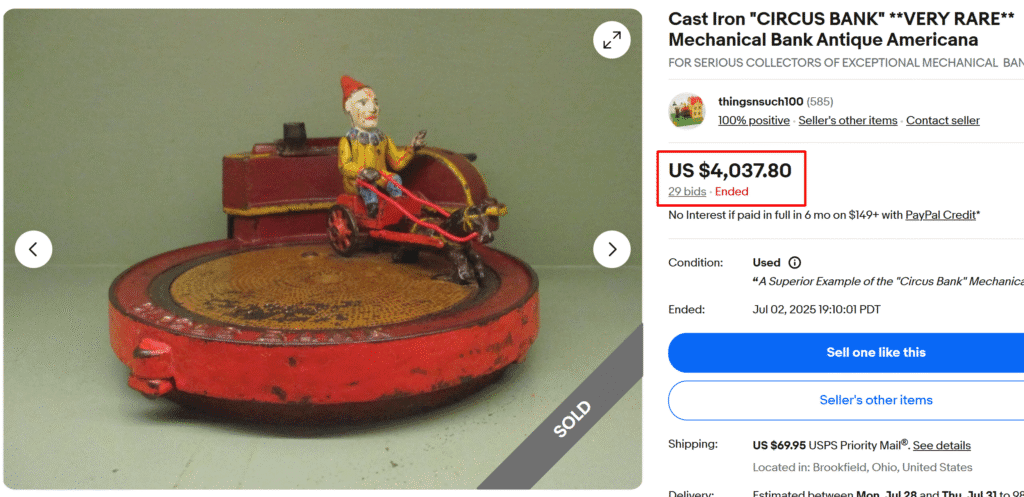
These clever little machines taught kids to save money while entertaining them. Drop in a coin, and a tiny figure would kick a football, ring a bell, or dance a jig. Most came from American companies between 1870 and 1920.
The big names were J. & E. Stevens and Shepard Hardware. They packed incredible detail into these banks. Some had multiple moving parts that all triggered from one coin drop.
Key Features You’ll See:
- Heavy cast iron bodies
- Hand-painted details in bright colors with gold accents
- Working mechanical parts and visible gears
- Coin slots that trigger the action when you drop money in
- Company names stamped right into the metal
- Internal springs and levers you can peek at through openings
How Much Is It: $150-$800 for common examples; rare banks can reach $1,000-$3,000+.
2. Hand-Signed Steiff Teddy Bear
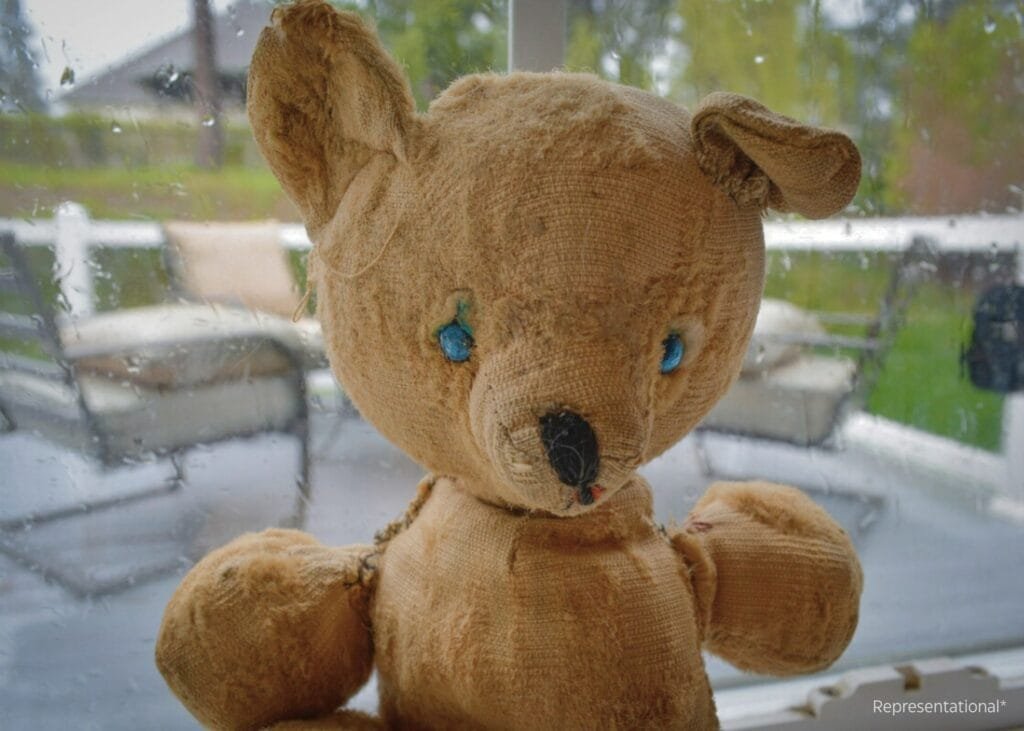
Richard Steiff created the first jointed teddy bear in 1902. Although his aunt Margarete ran the company, Richard had the brilliant idea to make a bear that could move its arms and legs. The famous Steiff button in the ear line started in 1904, which quickly became a hit!
You’ll Find:
- Thick, luxurious mohair fur
- Black glass eyes that look like tiny boot buttons
- Metal button in the left ear with “Steiff” stamped on it
- Yellow cloth tag attached to the button
- Cardboard disc joints that let arms and legs move in circles
- Long snout and humped back
- Hand-stitched nose and mouth in black thread
What’s It Worth: Generally $200-$1,200 for pre-1920 bears, with rare early examples reaching $3,000-$5,000+.
3. Tinplate Mechanical Toys
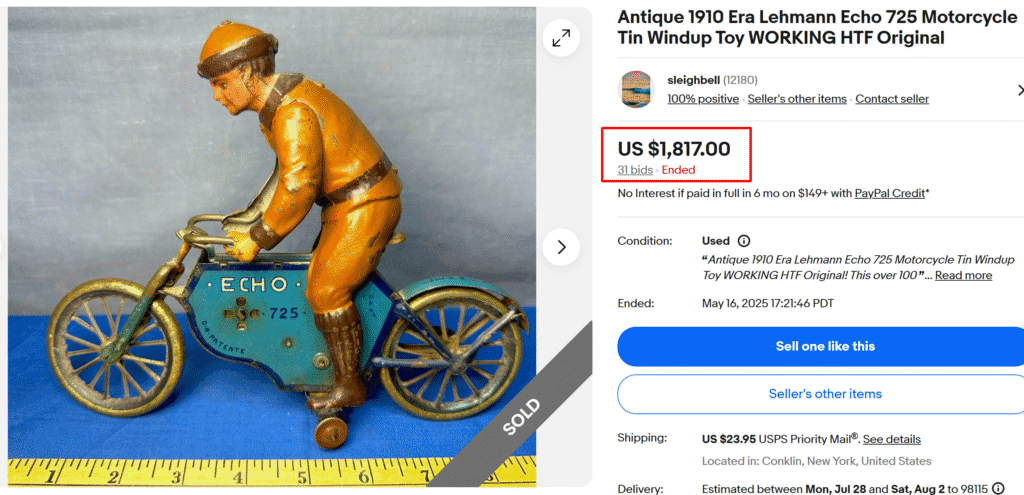
Several German companies made toys that moved on their own. Wind them up, set them down, and watch a tin car drive in circles or a dancer spin around. The printing and craftsmanship on these toys were incredible, with tiny details everywhere.
Lehmann is one of the biggest names behind these mechanical toys! Each of their toys had colorful pictures printed right onto the tin, then painted by hand for extra detail.
Look for This:
- Bright, detailed pictures printed directly on the tin surface
- Wind-up keys attached with chains (don’t lose them!)
- Company logos stamped or printed on the toy
- Moving wheels, arms, or figures that spring into action
- Springs and gears visible through windows or openings
Average Worth: Common toys fetch $100-$600; rare Lehmann pieces go up to $1,200-$4,000+.
4. Antique French Porcelain Fashion Dolls
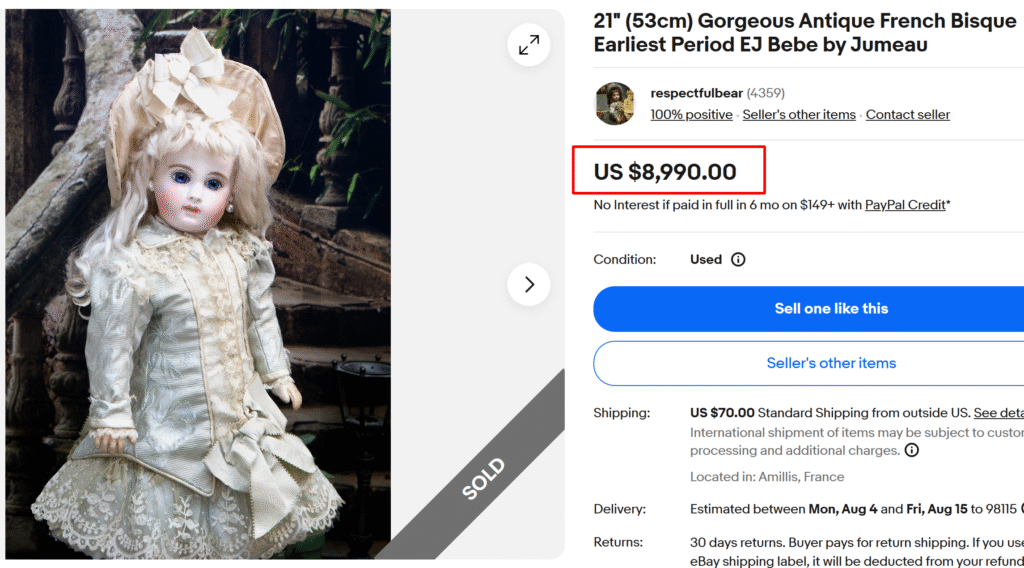
French dollmakers made these mini fashion models or dolls for the kids of wealthy families, but these weren’t really to play with, as they’re made of delicate materials like Bisque and porcelain. They were tiny versions of the latest Paris styles that came with real jewelry and silk stockings.
Antique fashion dolls from popular French companies, like Jumeau, Bru, Gaultier, Rohmer, and Simone, are extremely valuable today; don’t overlook them, ever!
What You’ll See:
- Bisque heads with a matte finish
- Large glass eyes with painted eyelashes
- Real human hair styled in perfect period hairstyles
- Tiny silk dresses with working buttons and real lace trim
- Kid leather bodies that feel soft and flexible
- Maker’s marks stamped on the back of the head
What’s Its Price: These are worth $400-$2,000 based on quality, with top makers like Jumeau/Bru realizing $5,000-$15,000+.
5. Märklin Tinplate Train Sets
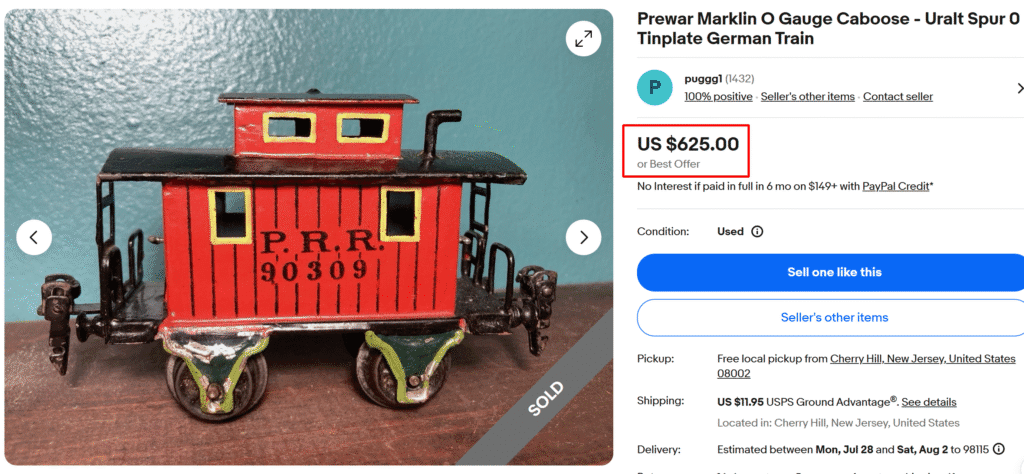
Toy trains before Marklin were complex; you got a train and figured out your own track. Märklin changed everything in 1891 when it showed the first complete train set at a toy fair. They said, “Here’s the whole layout – train, track, stations, everything,” and kids loved it!
Their trains were built like real locomotives, just smaller. Heavy tin construction, working parts, and details that would make a real engineer proud.
Spot This:
- Thick tinplate built with hand-painted details
- Brass fittings, handrails, & other working parts
- Three-rail track system
- Clockwork mechanisms with visible gears
- Company plates with numbers stamped on the bottom
Estimated Value: $150-$800 for basic sets; rare early and complete Märklin train sets could go for $2,000+!
6. Circus Toys & Characters
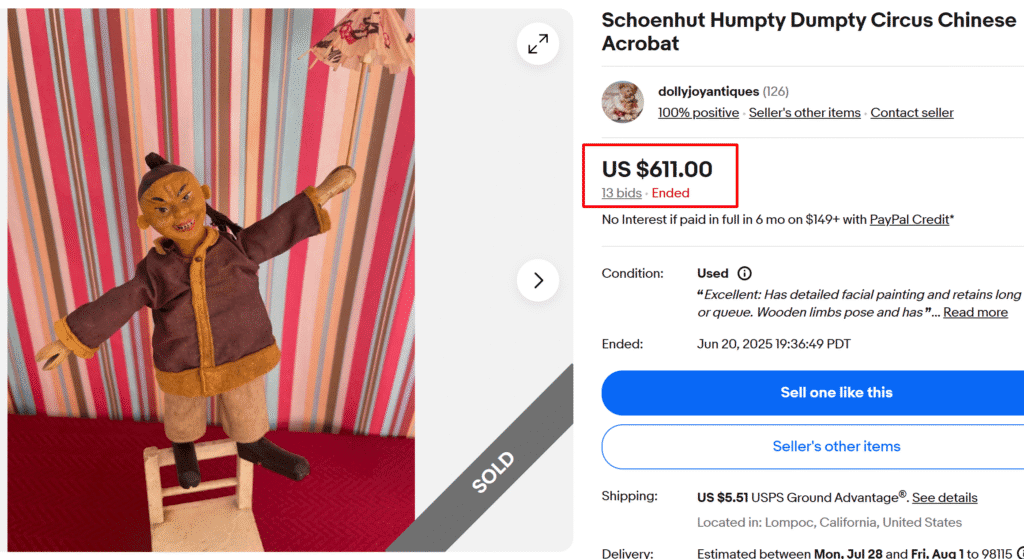
These wooden circus toys were poseable and performed tricks like real circus acts. Each piece had jointed arms and legs, which in turn were connected by elastic strings, so kids could get the acrobats to do handstands or the elephants to stand on their back legs.
The figures were small enough for tabletop play yet detailed enough to look very realistic from a distance. Complete sets with dozens of pieces, like animals, performers, circus equipment, and props, can be of huge value today, especially from brands like Schoenhut!
Signs of Value:
- Hand-carved wooden figures with moveable joints & glass bead eyes
- Bright paint jobs in classic circus colors
- Elastic strings connecting the joints
- Tiny fabric costumes sewn onto the wood
- Schoenhut stamps on feet or hidden spots
- Figures that can pose in circus positions
How Much Is It?: These fetch $75-$800 per figure based on quality & rarity; $1,000-$2,0500+ for complete original sets.
7. Wooden Building Blocks
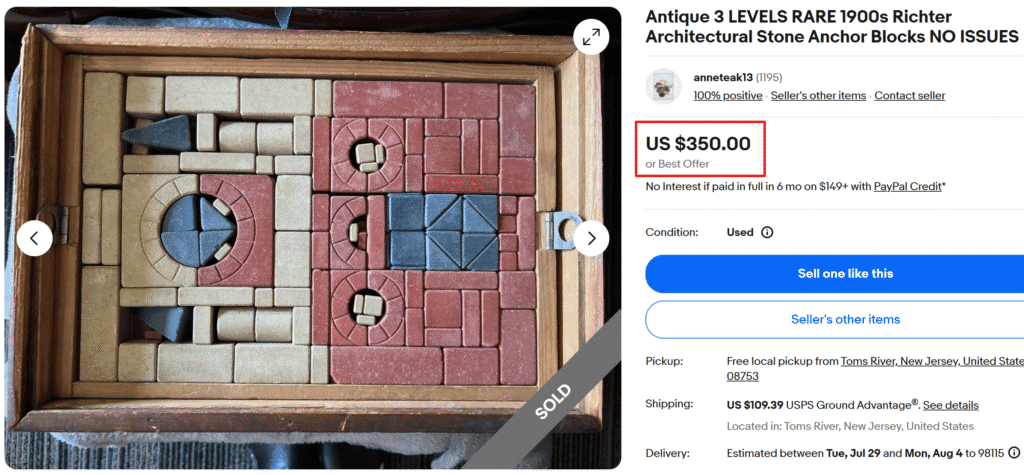
Kids from the 1900s built entire worlds with these before Lego existed. You see way more than square blocks, but arches for doorways, columns for temples, and triangles for roofs. Brands like Crandall’s made sets so perfectly cut that those smooth-sanded pieces fit together like puzzles.
It was also a smart way to teach kids shapes and engineering. The wood was usually maple or beech, which was tough enough to survive being thrown around for decades.
What You’ll Find:
- Multiple geometric shapes other than cubes
- Smooth-sanded hardwood construction in natural finish
- Precisely cut pieces that fit together perfectly
- Original wooden storage boxes with fitted compartments
- Hand-tool marks
What’s It Worth: You can expect $100-$400 for complete sets; rare Crandall’s or Richter sets $400-$800+.
8. Topsy Turvy Cloth Dolls
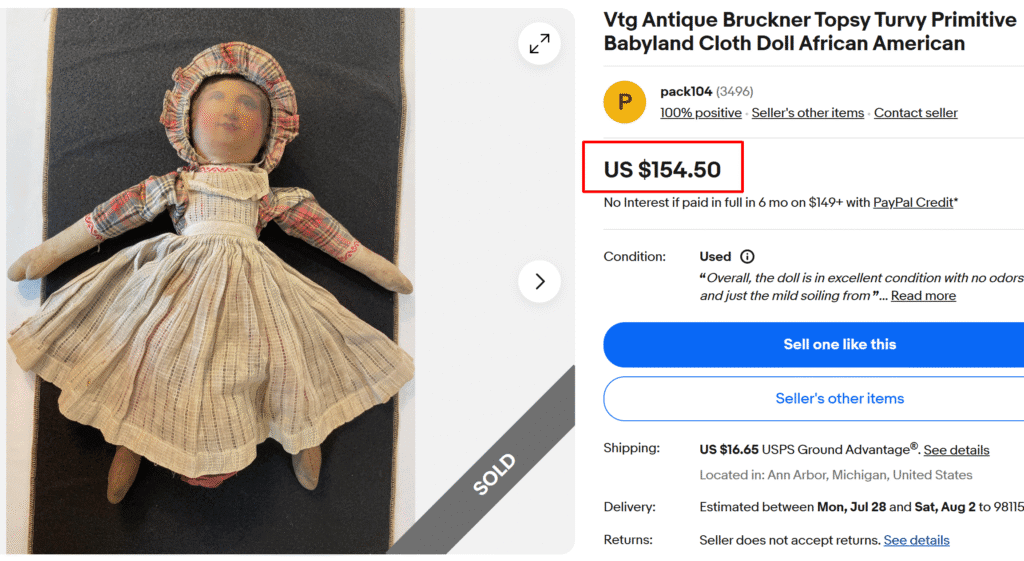
These folk art dolls tell a complex story with one body, two heads; you’ll flip the skirt and see a different doll. These probably started with enslaved women making toys from fabric scraps. So, each antique doll was completely handmade.
The oldest ones date to the 1870s. Some came with letters from one girl to another, showing how precious these simple toys were.
Spot These Signs:
- Single cloth body with two contrasting heads at both ends
- Long skirts that flip to hide the other doll
- Hand-stitched cotton or linen construction
- Simple embroidered faces in black thread
- Period fabrics like calico and gingham
Estimated Worth: $150-$500 for authentic examples; $600-$1,000+ for rare 19th-century pieces.
9. Antique Clockwork Toys
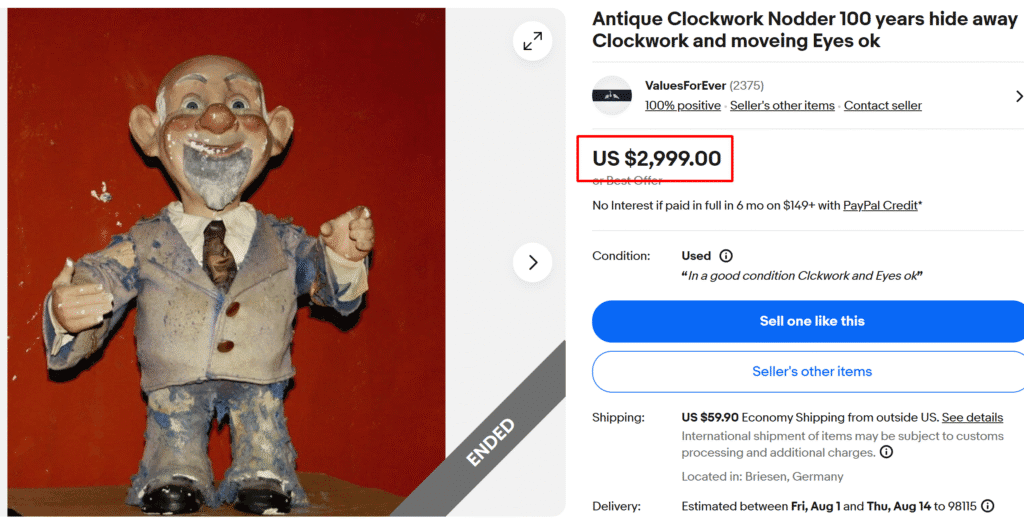
Working with the wind-up mechanism, clockwork toys were probably one of the best-engineered toys. You simply wind them up and watch figures walk, dance, play music, or perform magic tricks.
Some featured music while figures danced at the same time, and others had many actions at once. In these antique toys, you find dozens of gears, springs, and cams that all work in unison, a true example of 19th-century mechanical toy making.
Notable Features:
- Visible brass gears and springs through windows
- Original wind-up keys (rare to find)
- Multiple coordinated movements
- High-quality materials, like brass, steel, & fine fabrics
- Musical components are built into the mechanism
- Maker’s labels showing country and company
Today’s Values: Early working toys can fetch $400-$1,500; elaborate French automata toys go up to $2,000-$6,000+.
10. Wooden Dollhouses
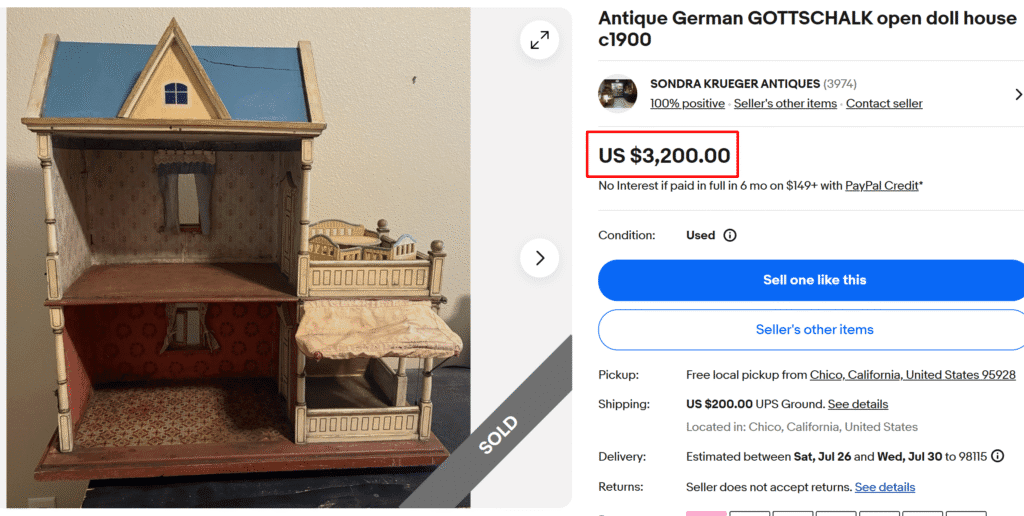
More than dolls, girls from the 1900s went crazy for these miniature mansions.
These are multi-story miniature houses with tiny hinged doors that open and close. Each room had wallpaper, furniture, and even little books on microscopic shelves. Kids spent hours rearranging furniture and redecorating.
The best examples featured working doors, removable furniture, and incredibly detailed interiors, meant for serious play. The exteriors often had printed paper facades that looked like real brick, stone, or wood siding.
Signs of High Value:
- Multi-room wooden construction with hinged fronts
- Lithographed paper exteriors mimicking real architecture
- Hand-painted window and door details
- Miniature wallpaper patterns inside each room
- Tiny accessories like dishes, books, and household items
German manufacturers like Gottschalk and Christian Hacker made the most popular dollhouses that almost matched real Victorian architecture.
What’s It Worth: Quality examples sell for $300-$1,200, with rare Gottschalk or Christian Hacker dollhouses fetching $2,000-$5,000+.
11. Wooden Noah’s Ark Set with Resin Animals
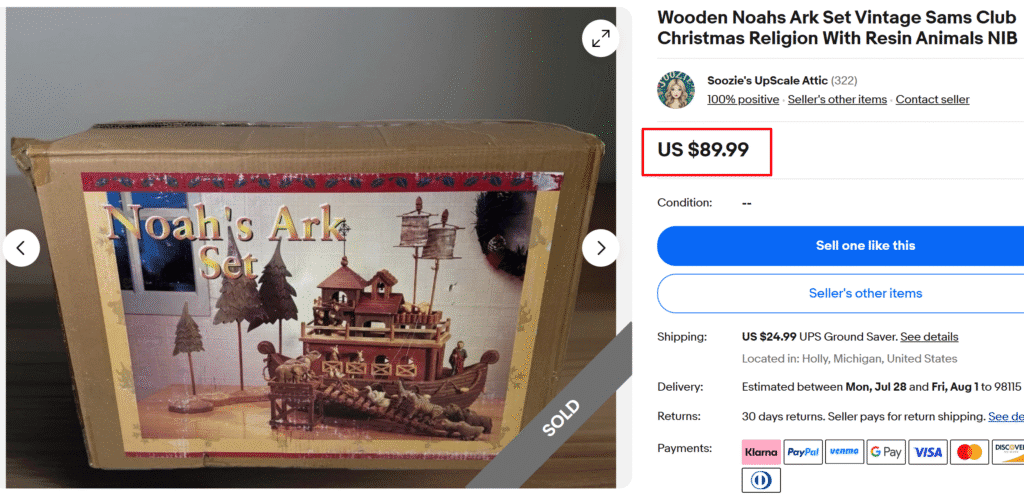
These biblical playsets were popular “Sunday” toys in Victorian homes, the only toys many children could play with on the Sabbath. Each set included a wooden ark filled with pairs of hand-carved animals plus Noah and his wife.
German craftsmen in the Erzgebirge mountains made the best ones. Every animal was hand-carved and painted with incredible detail. The ark itself opened up with the hinged roofs to show all the tiny passengers inside.
What You’ll Find:
- Wooden ark with hinged roofs
- Hand-carved animals
- Noah and wife figures in period dress
- Natural wood constructed with hand-painted details
How Much Is It: Common or incomplete sets go for $70 to $300, but exceptional, full German sets can fetch more!
12. Antique Paper Dolls
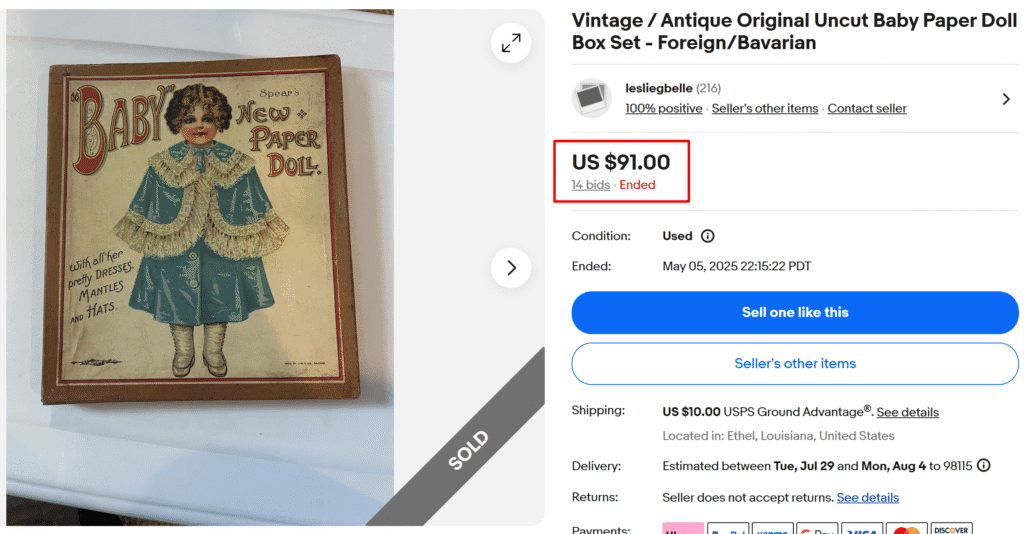
Although these look like simple cutouts, paper dolls were huge in the early 19th century. Thanks to chromolithography, these had dozens of colors with incredible details and realistic features.
McLoughlin Brothers started making paper dolls in 1828 and became the biggest name in the business. Their dolls had names like “Dottie Dimple” and “Lottie Love” and came with elaborate wardrobes.
If you have a complete, uncut paper doll set, consider yourself lucky, as they’re super rare today.
Notable Characteristics:
- Paper or thin cardstock construction
- Chromolithographic printing with vibrant colors
- Tabbed clothing that folds over the doll figures
- Detailed facial features with rosy cheeks and period hairstyles
- Uncut sheets showing printer’s marks and cutting guides
Average Values: While common sets only go for $25-$80, rare McLoughlin or uncut sets may reach $100-$500+.
13. Wooden & Cloth Puppets

Whether or not you played with one, you’d still know about puppet toys. These iconic theatrical toys are collectible to date because of their incredible craftsmanship and expressive character work.
Each puppet head was manually carved and painted by skilled people. The best ones have multiple materials, like carved wooden heads, hand-sewn fabric bodies, and costumes.
French Guignol puppets from Lyon, German marionettes, and English Punch and Judy shows all created their own puppet styles, which collectors hunt for these days!
Features That Matter:
- Hand-carved wooden heads. hands, & feet with expressive faces
- Cloth bodies with openings for hand control
- Hand-painted features (mustaches, eyebrows, rosy cheeks, etc.)
- Period costumes in silk, cotton, or wool fabrics
- Control strings or rods for manipulation
- Traditional character types like Punch, Judy, and devils
How Much Is It: Well-preserved antique puppets could sell for $200-$2,000!
14. Wooden Rocking Horses
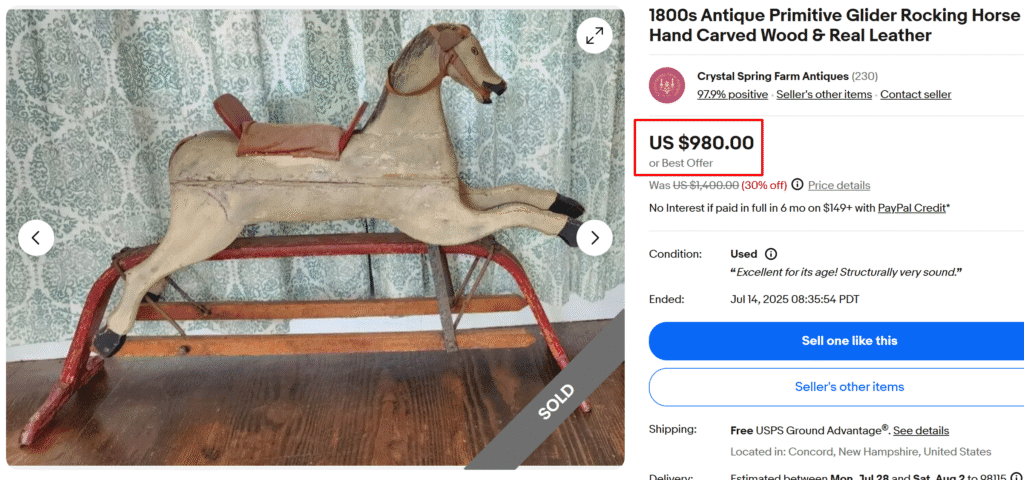
Every well-to-do family had one of these in the nursery. Built like real furniture, these had solid wood frames, genuine horsehair manes, and leather saddles with brass buckles. Kids could ride them hard for years without breaking anything.
Each horse was hand-carved by skilled craftsmen. F.H. Ayres and G. & J. Lines were the Rolls-Royce of rocking horse makers. Their horses had glass eyes, dappled paint jobs, and enough detail to fool you from across the room.
Look for This:
- Carved wooden bodies with realistic horse anatomy
- Dapple gray or bay paint with hand-painted spots
- Leather saddles and bridles with brass hardware
- Curved wooden rockers or safety stand platforms
What’s It Worth: $200-$400 for Common, plain examples. Ornate ones with real leather can go for $500 to $1,000, while rare 19th-century pieces may cross $2,000!
15. Cast Iron Cap Guns
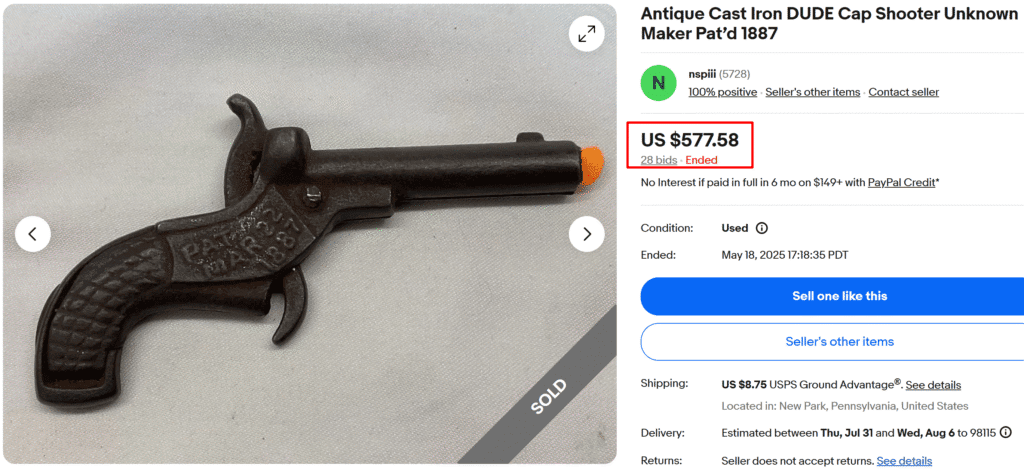
Every kid wanted to be a cowboy, and cap guns made it possible. These were solid and sturdy cast-iron play guns with working hammers and triggers. You could load in a paper cap, pull the trigger, and get a real bang and puff of smoke.
Stevens made some of the most detailed cap guns ever, with models like “Buffalo Bill” and “Peacemaker” being highly collectible today.
You’ll Spot This:
- Heavy cast iron construction
- Ornate decorative patterns cast into the metal
- Working hammers and triggers with real springs
- Company names molded into the grip or barrel
- Working cap compartments (rare to find!)
How Much Is It: Common cap gun models are worth $50-$250; rare Stevens or Ives examples may sell for $400-$1,200+.
Note: This article is intended for informational, educational, and entertainment purposes only. Some images are illustrative and may not represent actual brands, products, or related entities. All trademarks, product names, brand logos, packaging, and other intellectual property referenced remain the exclusive property of their respective owners. Any brand mentions or references are provided solely for descriptive and educational context and do not imply any formal or commercial association.

